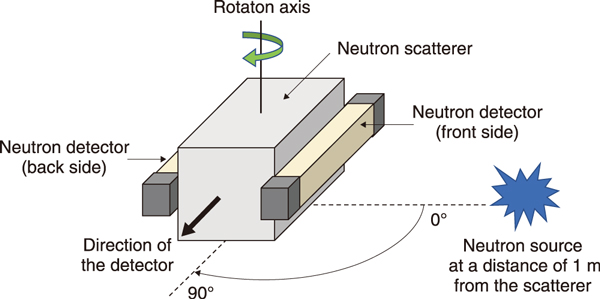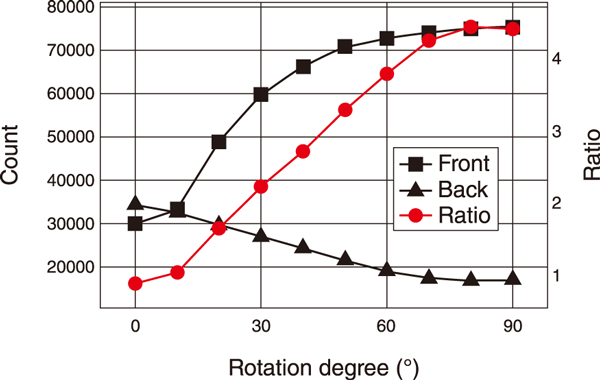
Fig.1 Detection equipment comprising rod-shaped detectors and a neutron scatterer

Fig.2 Count comparison of the two detectors and the ratio of the counts
One of the challenges in ensuring nuclear security for large-scale public events such as the Olympics and for large commercial facilities is preventing acts of terrorism involving nuclear and radioactive materials. Various radiation detection devices are being developed to prevent the entry of nuclear and radioactive materials into the venues of such event or their surroundings, and to rapidly detect and respond to such incidents if they occur.
Some nuclear materials and industrial radiation sources emit high-energy neutrons. They have high penetration capability, making shielding more difficult than in the case of other types of radiation. This capability also limits the ways in which such materials can be concealed. Therefore, detecting high-energy neutrons may be an effective approach to detect such emitters. We are working on the development of the technology to rapidly estimate the direction from which high-energy neutron radiation is being emitted coming and to enable more rapid responses.
There are several types of neutron detectors, each with different characteristics, such as the energy that they can detect. For example, the commonly used 3He detectors are excellent at detecting thermal neutrons (low-energy neutrons); however, when high-energy neutrons have to be measured, it is necessary to reduce the energy of these neutron by using a moderator. Therefore, it becomes difficult to determine the direction of the incoming neutrons, and the neutrons scattered by the surrounding material may be detected. Hence, the 3He detectors are not well suited for locating radiation sources emitting high-energy neutrons. In contrast, plastic scintillation detectors cannot detect thermal neutrons, but they can directly detect high-energy neutrons. These detectors can detect direct neutrons coming from a source but cannot detect scattered neutrons. Therefore, by using an asymmetric detector to impose a direction dependency on counting, the direction of incoming neutrons can be estimated. We built a rod-shaped plastic scintillation detector. The measurement setup is illustrated in Fig.1. The setup comprises two rod-shaped detectors−one on each side of a neutron scatterer. When this setup is rotated, differences arise in the counts at the two detectors, and by comparing these differences, the direction of the incoming neutrons can be estimated. Through an experiment of counting neutrons by rotating the setup in steps of 10°, we obtained the measurement results shown in Fig.2. Furthermore, by determining the ratio of counts at the two detectors, we can directly estimate the direction from 10° to 80°. By using this measurement setup, it is possible to simultaneously detect neutron radiation sources and estimate their direction, thereby shortening the time required to detect radiation sources employed for terrorist purposes.
This research was supported by MEXT, under the subsidy for “Nuclear Security Enhancement Promotion Project.”
(Takahashi Tohn)
<Previous: 7 Development of Science & Technology for Nuclear Nonproliferation | Next: 8 Research and Development Related to the Accident at TEPCO’s Fukushima Daiichi NPS>